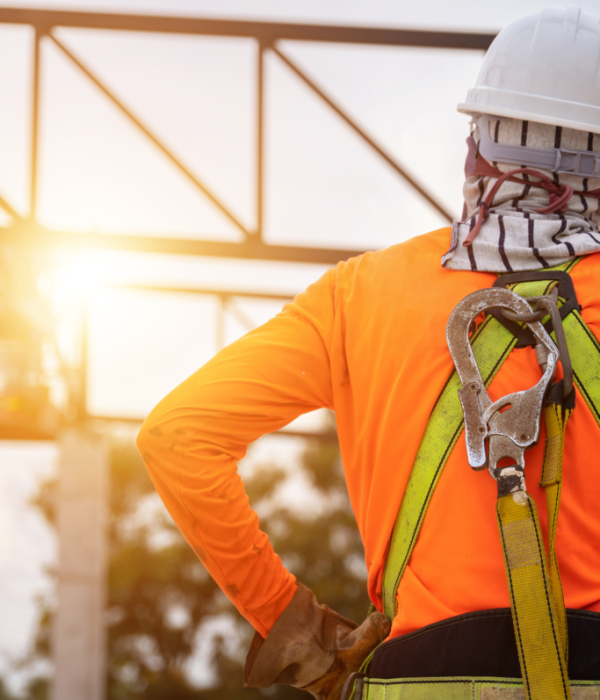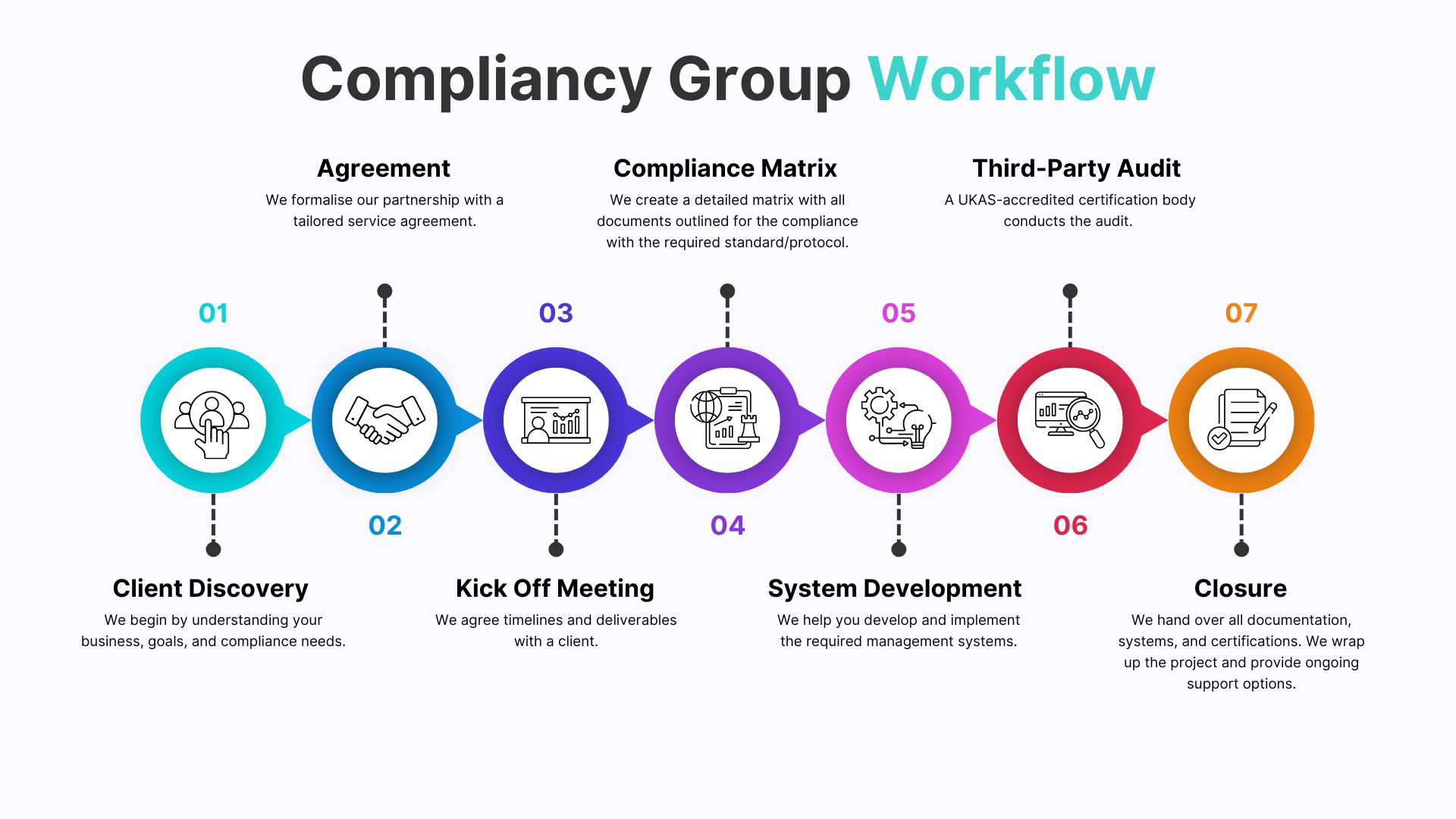We're Here To
Help

A Personal Fall Protective Equipment (PFPE) Inspection is a critical assessment designed to ensure all harnesses, lanyards, connectors, and other fall protection gear are safe, functional, and compliant with current regulations. Completing regular PFPE inspections demonstrates your business’s commitment to worker safety, legal compliance, and proactive risk management – trusted by clients, partners, and regulators across construction, industrial, and maintenance sectors. With robust PFPE management, you reduce the risk of falls from height, protect your workforce, and maintain operational reliability. Compliancy Group guides you through every step – making PFPE compliance clear, practical, and a genuine business advantage.
We understand the complexities of fall protection equipment standards, inspection routines, and regulatory requirements. Our team brings hands-on experience with statutory assessments, best practice checks, and industry-specific solutions.
No one-size-fits-all here. Whether you need initial inspections, ongoing monitoring, documentation support, or compliance advice, our services are fully customised to your operations. We offer flexible support packages—from essential guidance to comprehensive on-site consultancy.
We work exclusively with UKAS-accredited certification bodies and maintain a 100% pass rate for compliance assessments. Our clients trust us to deliver results that stand up to audit and regulatory scrutiny—helping you achieve, maintain, and leverage PFPE compliance for business growth.
Compliance shouldn’t slow you down. We help you build safer worksites, reduce risk, and improve operational efficiency—so you can focus on your core business.
You’ll work directly with our expert team, including leadership involvement from our CEO. We pride ourselves on responsive communication, clear guidance, and ongoing support throughout your compliance journey.
Demonstrate compliance to secure contracts and reassure clients or insurers.
Show your commitment to height safety, legal responsibilities, and industry standards.
Minimise the risk of accidents, injuries, and costly liabilities.
Enhance your standing as a responsible and trusted organisation.
Regular inspections and compliance checks foster a culture of ongoing safety and operational excellence.
Strengthen Reputation
From initial inspection to ongoing support, our team ensures you’re always prepared and confident.
We streamline compliance processes, freeing up your team to focus on core business activities.
Services are tailored to your specific business needs, not generic templates.
Ongoing support, training, and regulatory updates keep your business compliant long after inspection.
Our 100% compliance pass rate and exclusive partnerships with UKAS-accredited bodies mean you’re in safe hands.

Fall protection equipment should be personally inspected before each use and at least once a year by a jobsite Competent Person (or more frequently if required by the manufacturer).
One way to minimise the likelihood of an accident is through the use of a Fall Arrest System. Yet, the PFPE, or Personal Fall Protective Equipment, used in a Fall Arrest System or preventative fall plan can be technical.
What 4 Items Do You Look For When Inspecting A Lanyard? The key elements to look for are lanyard material (webbing, cable or rope), hardware (buckle, ring, snap hook), stitching and label. If it is an energy-absorbing lanyard, the energy absorber pack has to be examined carefully.
every six months Safety harnesses should be inspected before and after each use to ensure they are in good condition and safe to use. Additionally, they should undergo a thorough inspection by a competent person at least every six months, or more frequently if subjected to heavy use or harsh conditions.
competent person Depending on your equipment and working conditions, you may need inspections more often. OSHA specifies that the annual inspection must be done by a competent person — an individual who has completed competent person training and is appointed by your employer.
Perfluoropolyethers (PFPE) are a class of liquid lubricants which have been used for many space applications for over 30 years
Energy-absorbing lanyards, meanwhile, should be inspected at least every six months, or three months if they're used in regularly strenuous conditions (in other words, if they're arresting falls on a very frequent basis).
However, most harnesses and lanyards should not be expected to last the full 10 years due to wear and tear from normal use. Depending on its type, usage, and maintenance, height safety PPE will last an average of 5 to 10 years before requiring replacement.
competent person Safety harnesses should be examined by a competent person before first use and at intervals not exceeding six months, or three months if used in demanding conditions. Pre-use checks are also necessary before each use ensuring that visual and tactile inspections are carried out by the user.